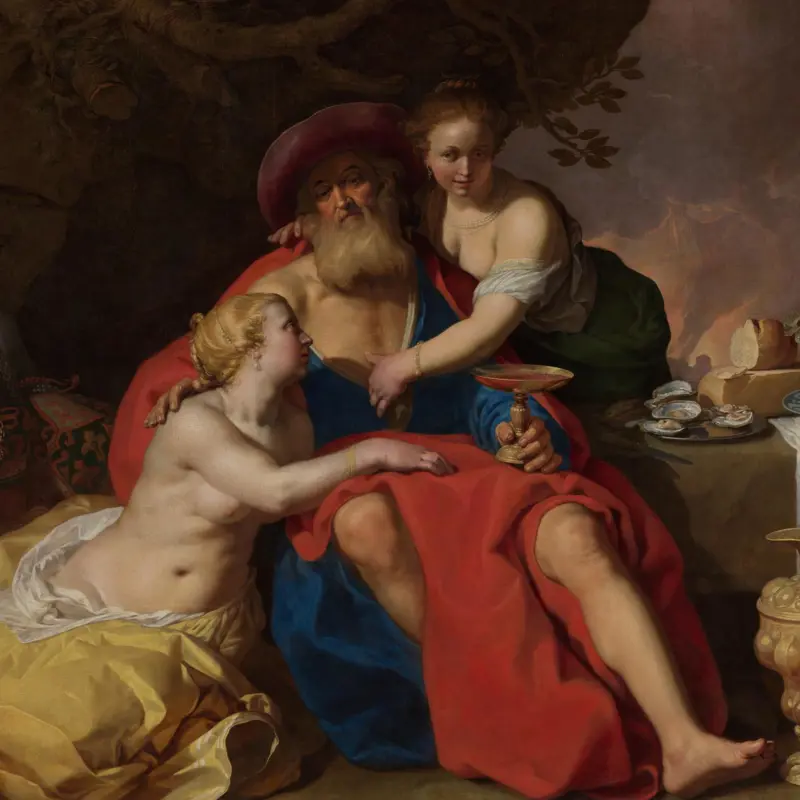Born on Christmas Eve in 1566 in Gorinchem, Abraham Bloemaert came from a family with artistic ties. His father was the Catholic sculptor and architect Cornelis I Bloemaert (about 1540–93). Abraham’s early education included copying the works of the Antwerp master Frans Floris.
After spending some time in Paris, Bloemaert returned to Utrecht in 1585, where he initially worked with his father. He later moved to Amsterdam and gained recognition as a painter. His work found its way into important collections, and he became known for paintings such as The Death of the Children of Niobe (1591, Statens Museum for Kunst, Copenhagen) and The Wedding of Peleus and Thetis (about 1595, Alte Pinakothek, Munich), whose Mannerist approach shows the influence of Bartholomeus Spranger. In 1593 Bloemaert returned to Utrecht, where he would spend the rest of his life and where for many years he was the leading painter and an outstanding teacher. Jan Both, Gerrit van Honthorst, Hendrick ter Brugghen (represented at the Gallery with important works), and many other Utrecht painters of the period trained with him. His four artist sons also learnt their trade from their father. Bloemaert was a good learner too and rapidly assimilated the new ideas his pupils brought back from Italy.
Bloemaert’s style evolved over time. Early in his career he was one of the leading Dutch exponents of Mannerism, but around 1610 his style shifted from Mannerism to a more classicising approach. In the 1620s he had a Caravaggesque phase, and in his later years he adopted some aspects of the classicism of the Carracci. Bloemaert’s reputation extended beyond Utrecht. He received commissions for high altars and devotional works in various cities, and his talent was recognised by the stadtholder’s court. Notable visitors to his studio included Peter Paul Rubens and Elizabeth Stuart. In his later years, Bloemaert focused on creating a teaching manual, which was published by his son Frederick in 1650 under the title Artes Apellae Liber and later as De Teeken-const. Bloemaert died in 1651 at the considerable age of eighty-six.

